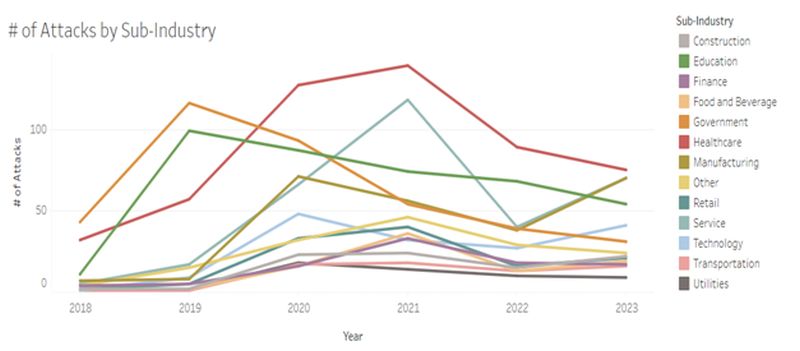Medical records are some of the most-hacked data on the internet.
With strong legal requirements for you to keep patient data safe, hackers target this information in the hope you’ll be embarrassed enough to pay a ransom to protect privacy.
The average ransom paid by a US healthcare company is $870,000, and an average of 158,000 records are hacked each time.
Indeed, it’s the most targeted sector in the USA, and the trend doesn’t seem to be going away.
What can you, as a person handling online medical records, do to protect your patients, employer, or company?
Here are the six best ways to ensure you’re doing the best for your service users.

1. Train your staff on security protocols
Phishing – scam emails pretending to be a legitimate company to get your personal and security information – is a common way for hacks to start.
Hackers will target your team with emails that will seem to be from you or your company. The team will be fooled into giving away their login credentials or possibly downloading a file that will let hackers access your systems.
It’s vital that you educate everyone in the company about how to spot a phishing email and how to assess whether a link is safe.
Even your team members who don’t have internal email should be aware of the risks in case their personal accounts are targeted.
2. Maintain your devices well
Many hackers will try to infiltrate your systems through known weaknesses. Indeed, 21% of ransomware attacks globally start with the exploit of a known vulnerability.
Software companies and device manufacturers will release security patches and updates as soon as an issue is uncovered.
It’s vital to the security of your medical records that you always download and install these updates as soon as possible.
Make sure that all your team knows to do this too, for example, if managers have work phones or there are tablets used for record-keeping on site. The aim should be to close any risks as soon as possible.
3. Encrypt your traffic with a VPN
Another attack that healthcare companies can fall prey to is “man-in-the-middle” strikes. This is where a hacker will monitor the information sent into and out of your company in order to gain access to health records.
When you protect your devices with a VPN, you encrypt all traffic that goes to and from all your devices it’s installed on. This means that the data is scrambled in a way the hacker can’t break and can only be unscrambled at the other end.
Having a VPN on all online devices will give your company the most protection possible.
4. Implement strong password protocols
When Colonial Pipeline was hacked in 2021, causing widespread gas shortages across the US Eastern Seaboard and millions of dollars of economic damage, it all started with a compromised password.
Good password protocols and other access security can protect your patient records and company data. Have your team be prompted to change their passwords on a regular basis and train them on how to pick a strong password.
Implementing a two-factor authentication system with continuous authentication is one of the strongest levels of access protection you can have.
Anyone accessing data will need to confirm their access through a second layer of security, and their credentials get checked regularly.
5. Use a data loss prevention tool
Using a data loss prevention (DLP) tool can help protect your data and systems in a number of ways. It plugs a range of vulnerabilities and can be the last line of defense if a hacker does get past other security.
This tool is able to detect the type of data within your system, identify it as medical records, and make sure only authorized IDs, devices, and IP addresses can access this information. It is also able to monitor the flow of data and alert your technology team about potential exfiltration of data.
It is a high-level tool, but one that could prove invaluable. It automates some of the monitoring that is essential for better record security.
6. Install firewalls
Firewalls are a simple and effective way to block dangerous traffic coming into your network, which could be the start of a distributed denial of service (DDoS) attack.
A firewall monitors the traffic that goes in and out of your network and can block anything that it against the rules that you set. For example, you can block access from certain countries or servers that you know have no need to send data to your systems.
Firewalls can work well alongside VPNs, making sure that you only allow the traffic you want and all the traffic is encrypted as well.
Keeping medical data safe
Medical records are highly regulated in most jurisdictions. Indeed, you hold some of the most sensitive and, therefore, valuable data about a person.
It’s crucial that you implement strong security processes, including staff training, tools such as VPNs and firewalls, and automated protection, including a DLP tool.
Article Submitted By Community Writer




